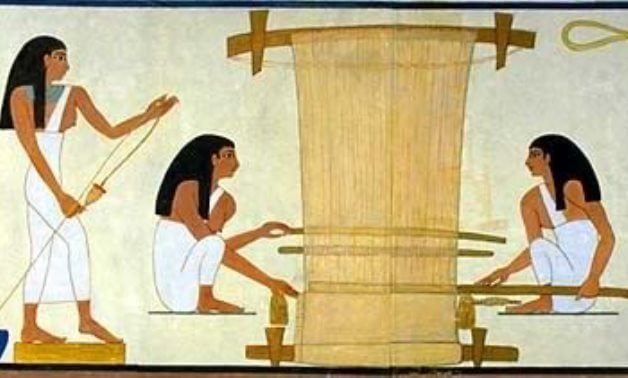Humanity's Leap Forward: The Discovery of Weaving and the Beginning of the Art of Weaving

The tradition of weaving traces back to Neolithic times – approximately 12,000 years ago. Even before the actual process of weaving was discovered, the basic principle of weaving was applied to interlace branches and twigs to create fences, shelters and baskets for protection.
Structural concept of loom evolved from the ancient methods of arranging yarn or plant material for finger weaving some form of basketry and netting.The most common was plain weave.Later they became invertive to find long float twill,basket weave twill etc.
 There are some indications that weaving was already known in the Paleolithic Era, as early as 27,000 years ago. An indistinct textile impression has been found at the Dolni Vestonice site.
There are some indications that weaving was already known in the Paleolithic Era, as early as 27,000 years ago. An indistinct textile impression has been found at the Dolni Vestonice site.
According to the find, the weavers of the Upper Palaeolithic were manufacturing a variety of cordage types, produced plaited basketry and sophisticated twined and plain woven cloth. The artifacts include imprints in clay and burned remnants of cloth.
The oldest known textiles found in the Americas are remnants of six finely woven textiles and cordage found in Guitarrero Cave, Peru. The weavings, made from plant fibres, are dated between 10,100 and 9080 BCE.
In 2013 a piece of cloth woven from hemp was found in burial F. 7121 at the Çatalhöyük site (9,000-years-old fabric found in Çatalhöyük), suggested to be from around 7000 BCE Further finds come from the Neolithic civilisation preserved in the pile dwellings in Switzerland.
Another extant fragment from the Neolithic was found in Fayum, at a site dated to about 5000 BCE. This fragment is woven at about 12 threads by 9 threads per centimetre in a plain weave. Flax was the predominant fibre in Egypt at this time (3600 BCE) and had continued popularity in the Nile Valley, though wool became the primary fibre used in other cultures around 2000 BCE.
The oldest-known weavings in North America come from the Windover Archaeological Site in Florida. Dating from 4900 to 6500 BCE and made from plant fibres, the Windover hunter-gatherers produced "finely crafted" twined and plain weave textiles.Eighty-seven pieces of fabric were found associated with 37 burials.Researchers have identified seven different weaves in the fabric.One kind of fabric had 26 strands per inch (10 strands per centimetre). There were also weaves using two-strand and three-strand wefts. A round bag made from twine was found, as well as matting. The yarn was probably made from palm leaves. Cabbage palm, saw palmetto and scrub palmetto are all common in the area, and would have been so 8,000 years ago.
Evidence of weaving as a commercial household industry in the historical region of Macedonia has been found at the Olynthus site. When the city was destroyed by Philip II in 348 BCE, artifacts were preserved in the houses. Loomweights were found in many houses, enough to produce cloth to meet the needs of the household, but some of the houses contained more loomweights, enough for commercial production, and one of the houses was adjacent to the agora and contained three shops where many coins were found. It is probable that such homes were engaged in commercial textile manufacture.

